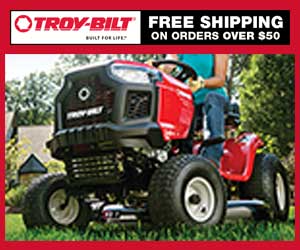Tack & Farm
Our Tack & Farm section features an Apparel section to find both practical and fashionable riding attire. If you ride English & Western or Race, many sources are available in the Tack section.
Building a barn? Need an architect for your equine dream home? Find one in Barns & Stalls.
Have a hungry horse? Of course you do! Find a place to buy your feed and tuck your horse in at night in the Bedding & Feed section. Looking for a place to keep your horse? You can find it in the Horse Boarding section. Keep your horse happy and beautiful with resources in our Grooming section.
Traveling? Find a Shipping company or Horse Sitting service if your horse is staying home!
Running and maintaining a farm or stable is a continuous effort, and to help find products or tools you need, please see our Equipment, Fencing and Management Tools sections.
Seeking Services? Find financial and tax expertise in our Accounting section. Companies who will help protect your investment are found in the Insurance section. For those who want legal advice about purchasing, liability, and other issues, please look at the Equine Law section to find an expert. Build and promote your business with teams from Marketing / Videography / Web Design.
Do we need to add more? Please use the useful feedback link and let us know!
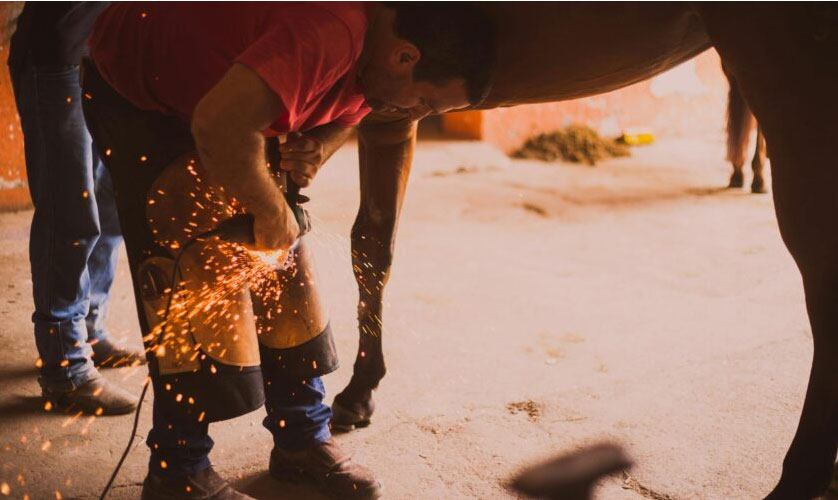
by Kristin Pitzer
Whether you’re a young horseman coming up through school or a seasoned veteran of the workforce looking to change careers, it’s never too early — or too late – to consider a job in the equine industry. If horses and the Western way of life are your passions, a career that allows you to promote them to others just like you can be very fulfilling.
“I think people should consider careers in the equine industry because for many people, horses are their passion, and we tend to be the happiest when we’re working for, toward, and within the elements we’re most passionate about,” said Jessie Jarvis, founder and CEO at Of The West, the job platform for the agriculture and Western industries. “For many young adults, owning their own horse isn’t always feasible, and [a job in the industry] allows them to still be involved in some way. For those who are more established and possibly looking for a career change, the equine industry is a great sector to consider because nothing is more rewarding than knowing your daily efforts are working toward building a stronger, more robust equine industry.”
Quarter Horse News put together some information on different careers in the industry to help you know where to begin.
Hands-On
There are two main options for careers in the horse industry: those that work directly with horses, and those that support the industry but don’t involve a person getting their hands on a horse every day. Jobs working with horses can be very rewarding and enjoyable, but they are also usually physically difficult, time-consuming and, without boundaries, can blur the line between work and play. For those willing to work hard, these jobs can lead to fulfilling careers.
“The equine industry is growing at a rate like never before, and due to that, the need for equine professionals is only going to increase as time goes on,” Jarvis said. “In addition to that growing number, I think we are also going to see an increase in the number of education pathways and trade programs focused on equine industry careers, allowing the sector to continue to grow and meet that future demand for equine industry jobs.”
1. Job: Equine Veterinarian
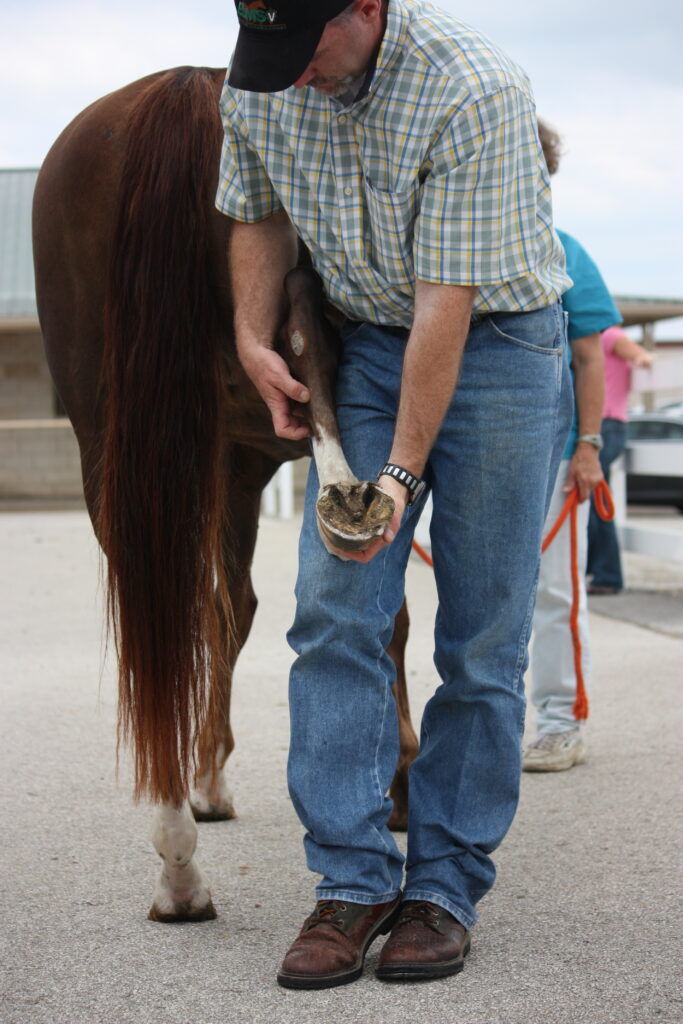
As long as horses can become sick or injured, there will be a need for equine veterinarians. People who become veterinarians tend to have good communication skills and are likely science- and math-minded. A love for animals is certainly necessary, but keep in mind you’ll be working with people just as much as horses. Compassion is a key element, as you’ll likely have to help owners face difficult situations and hard decisions.
To become a veterinarian requires extensive education: four-and-a-half years of undergraduate education, followed by four years of veterinary school, according to the American Veterinary Medical Association. All of that schooling isn’t cheap — the average cost of veterinary school in the U.S. is $200,000 — so many young veterinarians go into the workforce with lots of student loan debt in tow. There is, however, a shortage of equine veterinarians around the country, so if it’s a career path you’re interested in, you’ll certainly find a demand for it.
2. Job: Trainer
If patience and an ability to think outside the box are traits you possess and you have good business sense, people skills and riding abilities, you might think about becoming a horse trainer. There’s no doubt it takes a lot of work to become a successful trainer — many riders don’t realize how many hours their coaches put in every day. If you work hard and find your niche in the industry, though, you might find yourself eventually working with the industry’s nicest horses, most well-known owners and other top-level trainers.
You don’t need a degree to become a trainer — many would argue that apprenticeships under other trainers provide the best education — but some colleges offer equine science programs, while others have certificate programs in horse starting and horsemanship. It doesn’t hurt to take business classes, either, and having a degree to fall back on should you change your mind is never a bad thing.
3. Job: Farrier
Another job that gets lots of hands-on experience with horses is that of the farrier. Farriers are specialists that trim, balance and shoe horses’ feet. Being a farrier is physically demanding — most of your day is spent bent over while holding a horse’s foot up, after all — and without proper equipment, it can be hard on your body. Once you get established in a location, though, you can often pick and choose the hours, days and clients you want to work with.
Apprenticeships with veteran farriers are a great way to learn, and as your business grows, there are programs through organizations like the American Farrier’s Association (AFA) that will test you on your ability to perform the work to a prescribed standard. The AFA offers several levels of certification, from Certified Farrier, to Certified Tradesman Farrier, to Certified Journeyman Farrier. Some farriers go beyond even that and become specialists for certain breeds, activities and disciplines. Since most farriers are self-employed, business classes can be useful.
Hands-Off
If you are interested in a career in the industry but don’t necessarily have to be around horses every day, there are many different options to look into. While these jobs don’t involve riding or caring for horses, they often allow you to talk about horses — or something related to horses — every day, scratching the horse bug itch.
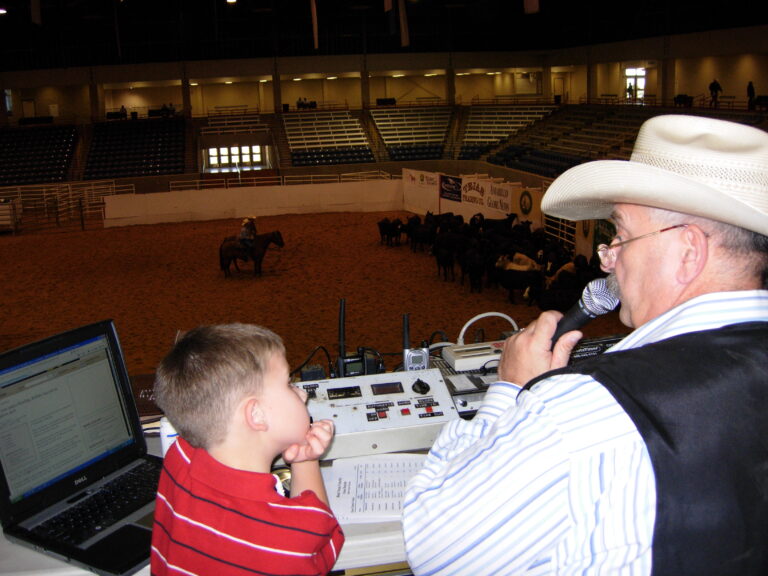
“While there isn’t any kind of study I can quote numbers from, I can confidently say that the majority of careers in the equine industry do not work directly with horses,” Jarvis said.
“All of the products, businesses and organizations that keep our industry going are centered around the horse; however, that doesn’t mean they physically touch a horse on a daily basis. But that doesn’t mean their work is ‘less than’ others who do work directly with horses because without those feed companies, tack companies, publications, events or member organizations, there’s no denying that our industry would cease to exist. It takes every single job in the equine industry to keep it moving forward.”
4. Job: Journalist
Can you craft compelling stories, communicate results efficiently and hunt down news leads? If so, you might consider a career as an equine journalist. These writers and editors communicate industry news and document horse, rider, owner, trainer and breeder achievements. Without them, the Western performance horse industry archive would remain blank.
To become a journalist, you will need a bachelor’s degree in communication, journalism or a related agriculture degree. Having a good command of the English language, sentence structure, grammar and punctuation rules is critical, as are strong computer skills. Photography and basic videography skills are a plus, and in this day and age, knowledge of social media platforms is essential. And of course, to be successful in the equine industry, you must have a good understanding of horse anatomy, horsemanship and the disciplines you are covering.
5. Job: Show Manager
Those with an interest in both event management and horses might consider a career in show management. These people keep the horse show world running by hosting the industry’s events, from the top futurities to the smallest local weekend shows. If you are organized, enjoy problem solving, have a mind for budgets and can dedicate the time that is needed, show management might be for you. A bachelor’s degree in agriculture business, public relations, communication or even hotel and restaurant management can be useful for those seeking to become show managers. Internships at different equine sport governing bodies can help you network with people in the field and learn the rules of the organizations, and some, like the American Quarter Horse Association, offer show management workshops with online certifications. Experience managing people can be a boon, as show managers typically work with a plethora of assistants, from full time help to volunteers.
This article originally appeared on Quarter Horse News and is published here with permission.
There are more informative and entertaining articles in our section on Tack & Farm. While you're here be sure to check out our Curated Amazon Store.
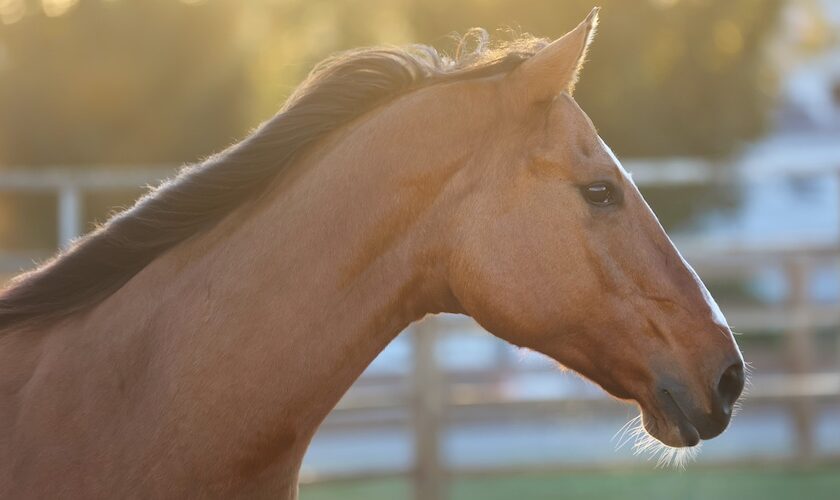
by Kristin Pitzer
When it comes to diseases in horses, pigeon fever is one that should win an award for most misleading name — it has no relation to pigeons, and fever isn’t usually associated with it. The disease is named for the abscesses that commonly form in the pectoral region of a sick horse, resembling a pigeon’s breast. But though its name is deceptive, pigeon fever is a common disease that affects many horses, especially those living in dry, arid parts of the country.
While not usually fatal, certain forms of pigeon fever can lead to complications and even death if left untreated. Quarter Horse News spoke with Dr. Jen Voellinger of Precision Equine in Springtown, Texas, to get more information on the cause, symptoms, treatment and prevention of this disease.
It May Be in Your Pasture
Pigeon fever is caused by the bacterium Corynebacterium pseudotuberculosis. It is common in places like California, Arizona, New Mexico and Texas, although new research suggests it may be present in most parts of the U.S., Southern Canada and Northern Mexico. The bacterium lives in the soil and is typically introduced to horses through breaks in the skin, often by flies dragging the bacteria into the wound.
Though not considered contagious between horses, flies may also spread the bacterium from a sick horse to healthy horses when they land in open wounds or bite. For this reason, affected horses should be separated from healthy horses if pigeon fever is suspected. This also prevents other horses from getting into the sick horse’s bodily fluids as the abscesses drain.
“If you’ve got a horse that’s draining lesions, I try to isolate that horse just because if flies land on those areas that are draining, they can spread it to different horses,” Voellinger said. “I also wouldn’t let a horse just nose a bunch of drainage. I try to pick up any pus and get rid of it the best I can to keep the flies off of it.”
Pigeon Fever Strikes Three Different Ways
The disease presents in three forms — external abscesses, internal abscesses and ulcerative lymphangitis — with external abscesses being the most common.
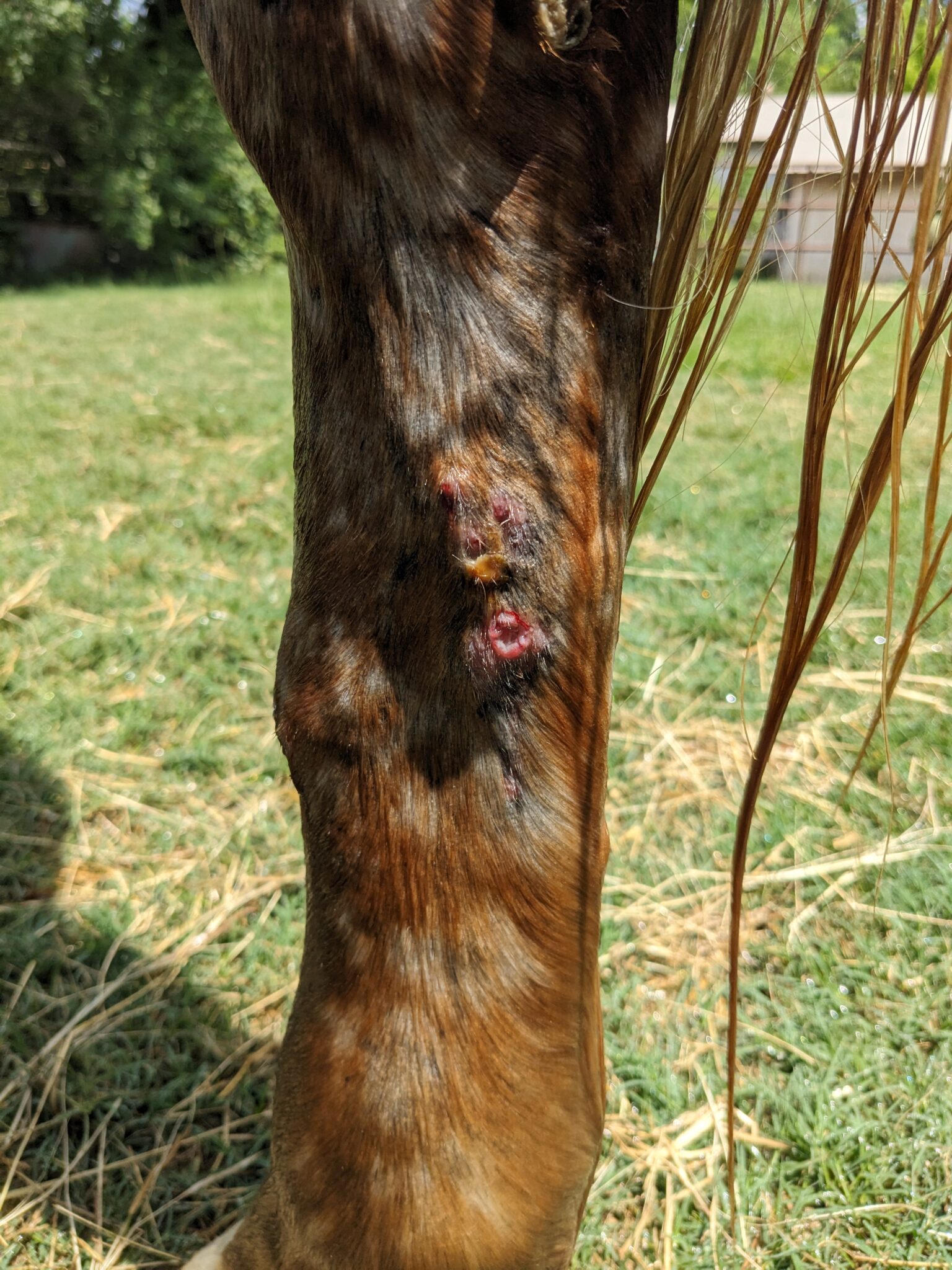
“The external abscesses are usually big abscesses, like the big breast abscesses they can get,” Voellinger said. “The internal abscesses can be anywhere — the lungs, spleen and liver are the most common ones. In the ulcerative lymphangitis form, it basically gets into the lymphatic system and will look like edema up and down the legs along with tiny, pea-sized abscesses and sores, commonly on the legs. I’ve seen them come up in other parts of the body, too. The lymphatic system goes everywhere, so they could be anywhere it goes.”
Most horses present with one form, but some, especially those that are immunocompromised, may be affected by all three. How your veterinarian treats it will depend on which form(s) your horse has.
Treatment Hinges on a Proper Diagnosis
Large abscesses, particularly in the chest, abdomen and limbs, are the obvious symptom of pigeon fever, but if your horse is lethargic, eating less, has developed an odd lameness or has swollen legs, your veterinarian may suggest an antibody test. For draining lesions, he or she can do a culture to look for the bacterium.
Veterinarians will typically let external abscesses develop and drain on their own. Most of these horses won’t even need antibiotics if they continue to improve and heal. Voellinger may put horses with the ulcerative lymphangitis form on antibiotics if they have leg swelling, edema and cellulitis. For those with internal abscesses, antibiotics are a must.
“You absolutely have to do antibiotics and probably for two to three months-plus on that, depending on the severity,” Voellinger said. “A lot of times you have to add Rifampin into that to help drive the antibiotic into the actual abscess. The good news is the bacteria is susceptible to most antibiotics, so it is pretty easy to kill if you can actually get the drug there. But it’s just hard to treat abscesses because they create a fibrous capsule around them, and it protects that bacteria from blood penetration, which is what you need to get your antibiotics there.”
Compromised Horses May Develop Complications
Horses with straightforward external abscesses may take some time to heal, but their prognosis is typically good. Those with internal abscesses, depending on how severe they are, generally have a good to guarded prognosis.
Horses that are immunocompromised for some reason, whether it’s because they’re older, have Cushing’s disease or have other metabolic diseases or autoimmune conditions, may struggle more to overcome the disease because their bodies don’t have the cellular capacity to fight off infection.
“All demographics are going to get exposed, but those horses are definitely going to be more susceptible,” Voellinger said. “Other populations seem to fight it off better and may not get clinical signs. Older horses that are more immunocompromised are going to be the ones that get the clinical signs more frequently or have worse cases.
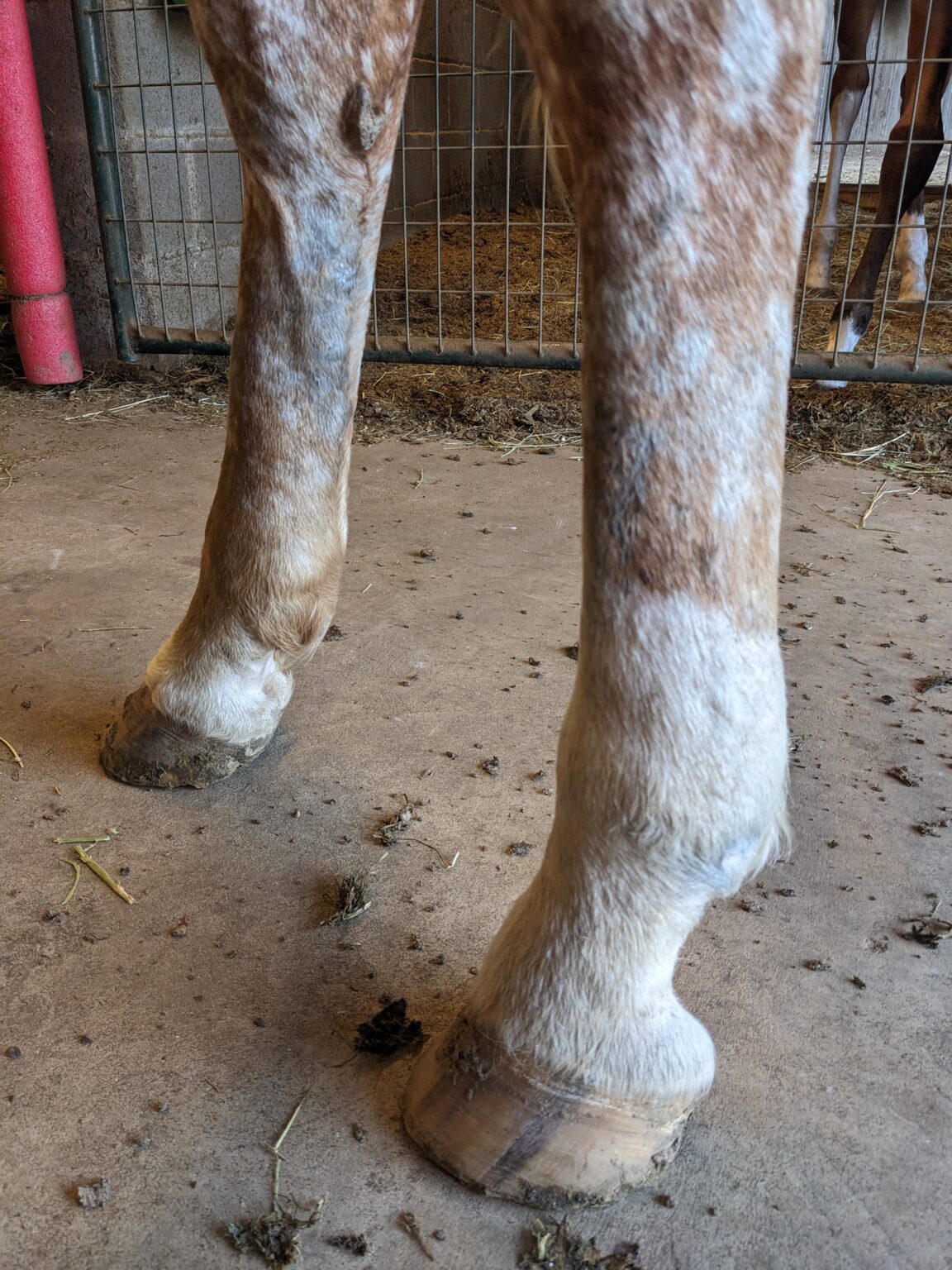
“It’s the same as why older people are more susceptible to flu and things like that,” Voellinger added. “Their body isn’t as robust and healthy to fight off infections. With Cushing’s, it messes up all the body systems and decreases immunity. They’re more prone to infections of all kinds.”
Reducing Flies Can Help Prevent the Spread
Because the bacteria lives in the soil, pigeon fever can be difficult to prevent. Many horses have likely already been exposed to it at some point in their lives, Voellinger said. Whether horses develop clinical symptoms or fight off the infection depends on each individual horse’s overall health and situation.
The best thing you can do to protect your horse is practice good fly control, she added. Reducing the fly load on your property gives flies less opportunities to introduce the bacterium to your horses.
“Fly sheets, fly sprays, IGR [insect growth regulator] feed-through fly treatments, fly systems in barns, fly predators — anything like that is really your best offense,” Voellinger said.
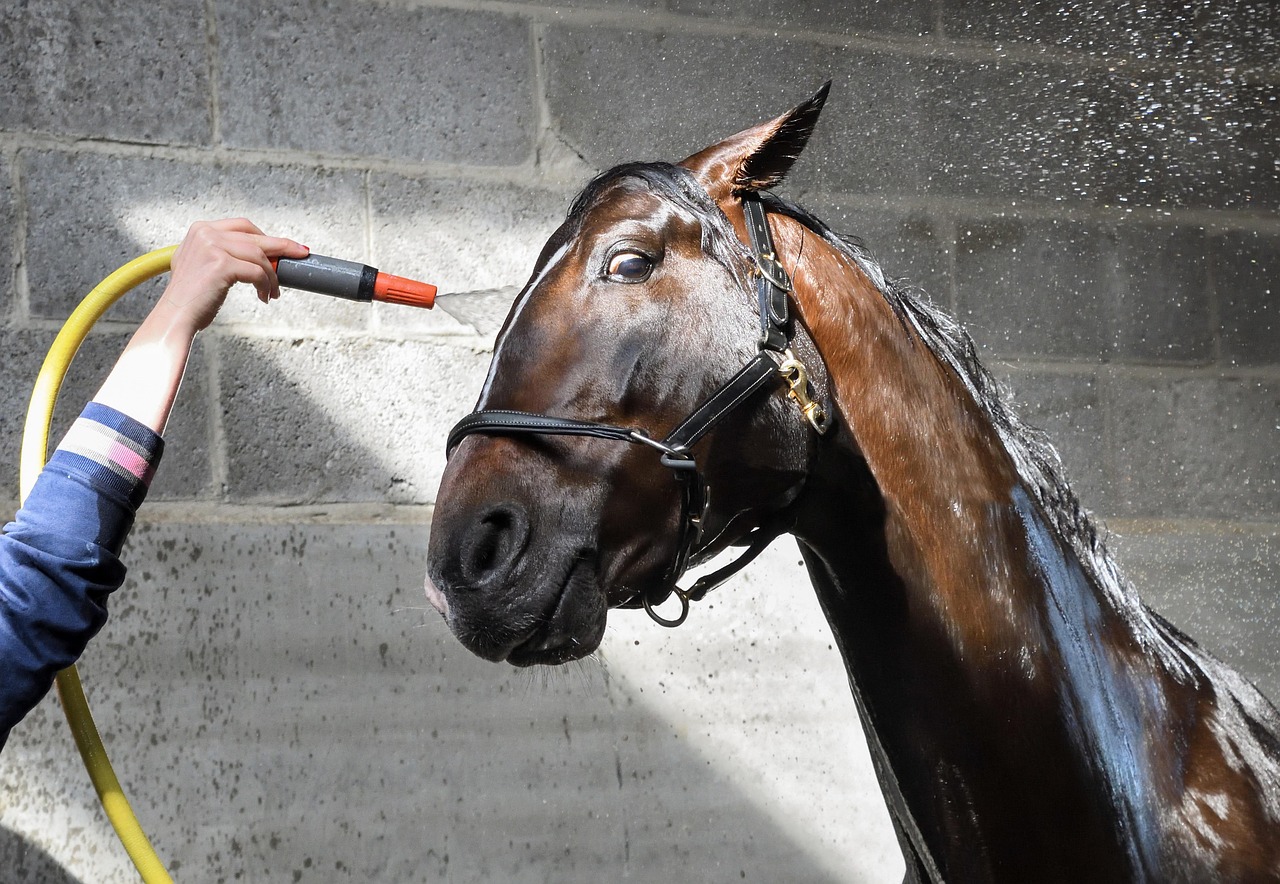
Yes, it has been a very hot summer for many of us. We still love to ride but of course our horse's health comes first - always.
To combat summer heat while riding horses, focus on reducing exertion, providing shade and water, and adjusting riding times to avoid the hottest parts of the day. Consider using cooling aids like misting systems and electrolyte supplements.
Here are some suggestions:
Riding Schedule and Intensity
- Ride During Cooler Hours:
Schedule rides for early mornings or late evenings when temperatures are lower. - Reduce Ride Duration and Intensity:
Shorten ride times and reduce the intensity of work, especially during peak heat hours. - Plan Cool-Downs:
Ensure a proper cool-down period after riding, including rinsing with cool water.
Providing Cooling Aids
- Shade: Provide access to shaded areas during turnout and breaks.
- Water: Ensure horses have access to plenty of fresh, cool water and electrolyte supplements.
- Ventilation: Use fans to improve airflow in stables, especially if horses are stalled during the day.
- Cooling Aids: Consider using cooling blankets, leg wraps, or specialized saddle pads to help regulate temperature.
- Misting Systems: Utilize misters to help horses cool down, especially after exercise.
Other Considerations
- Clipping:
Clip horses with long hair coats to help them shed heat more effectively. - Sun Protection:
Protect horses from sunburn, especially those with light skin or pink skin under white hair. - Observe for Heat Stress:
Monitor horses for signs of heat stress, such as excessive sweating, rapid breathing, or lethargy. - Consult with Veterinarian:
If you suspect your horse is suffering from heat stress, consult with a veterinarian immediately.
Don't forget to properly hydrate yourself too! You need to be well for your own health and the sake of your horse. Stay cool and enjoy!
You can find more informative articles in our section on Tack & Farm. Take a look at our Curated Amazon Store for our selections in a wide variety of categories!
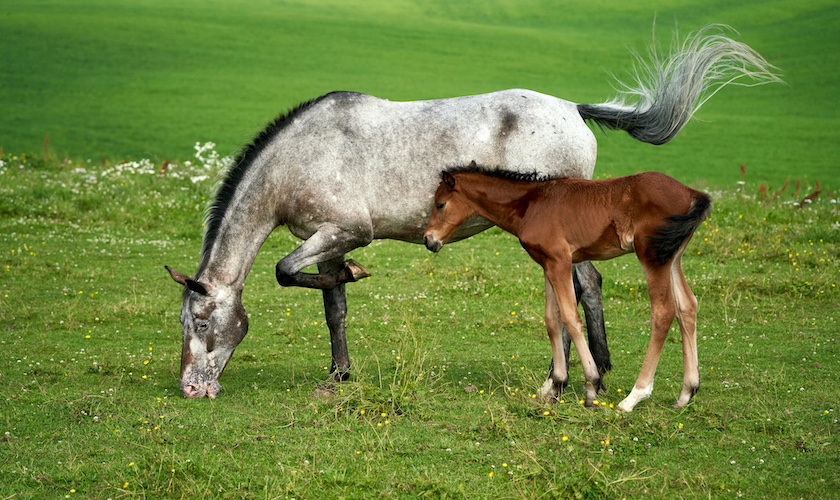
by Kristin Pitzer
With temps soaring into the 90s and above, humidity levels ramping up and insect activity increasing, there’s no doubt about it: the “dog days of summer” are here. The phrase refers to the 20 days before and after the star Sirius, or the “Dog Star,” rises and falls in conjunction with the sun and is typically used to describe the hottest and most humid days of summer.
Despite the often-unpleasant weather, many shows and events take place during this time. But as the temperature rises, the risk of heat stress in horses also increases, especially if they’re working vigorously. Quarter Horse News spoke with Jamie Pribyl, DVM, Professional Services Veterinarian at Boehringer Ingelheim, to learn how to ride and show safely during the hot days ahead.
Temperature and Humidity Play the Biggest Role
While there are several factors that can cause a horse to go into heat stress, temperature and humidity levels are the biggest. Once the temperature rises above 80 degrees, even without humidity, horses struggle to stay cool, especially if they’re in heavy work.
“And if our humidity is elevated, that’s going to add to it,” Pribyl said. “You can add the ambient temperature, so let’s say it’s 90 degrees, to the percent humidity, and if you get a number over 150, then we’re at a really high risk. At that point, the horse has a really difficult time cooling itself with its regular mechanisms.”
Other factors that contribute include being turned out in the sun with no shade; being shut into a poorly ventilated barn; standing in a trailer that is parked in the sun; and not having access to water.
Horses Need Help Acclimating
Horses that live in cooler parts of the country but travel to hotter locations for events may find themselves struggling with the heat even more than their peers. It takes a couple weeks for a horse to acclimate to a new environment, Pribyl noted. If you don’t have extra time for your horse to adjust, there are a few things you can do to help protect him.
“If you’re traveling during the summer to a hotter area, try to do your travel overnight because it’s cooler then,” Pribyl said. “Make frequent stops to give them some water, and if you’re providing them with electrolytes, make sure they also have plain water so that if they don’t like the electrolytes, they’ll drink the plain water instead.”
During the event, try to ride during the coolest parts of the day — mornings or evenings — and limit warmups to retain energy for the show pen. After your run, walk your horse out until their breathing has returned to a normal level, and offer them small amounts of water — half to one gallon every 15 to 20 minutes as you’re walking them out. You can also cold hose them continuously to help them cool, but if you stop while they’re still hot, make sure and scrape any insulating layers of water off to dissipate the heat.
Watch for These Signs
Horses that are suffering from heat stress may not exhibit obvious signs immediately. In fact, they might not look that different at first from a horse that has just been ridden or worked hard.
“If the horse is working, we’re used to seeing them sweat, but a horse in heat stress is going to be sweating excessively,” Pribyl said. ‘That respiratory rate’s going to kick up, and it’s not going to come down as quickly as we would expect it to if they’re being rested. Their heart rate is going to kick up as well. We might see lethargy or fatigue, and then sometimes we can see decreased appetite as well.”
If you don’t catch the early symptoms, a horse that is progressing into heat exhaustion may stop sweating entirely, a condition called anhidrosis. They will become severely dehydrated and may develop muscle tremors and weakness. If their symptoms continue to progress, their condition can become an emergency very quickly.
“The severe symptoms include a very high body temperature —if you were to take the rectal temperature, it could be over 103 or over 105. Basically, the cooling mechanisms have completely failed,” Pribyl said. “At that point, we’re going to see labored breathing. We could even see collapse or some neurologic symptoms like confusion and disorientation. They might develop colic symptoms, and we can start to see organ failure.”
Beware of Anhidrosis
Anhidrosis affects anywhere from 2% to 6% of horses, particularly those living in hot, humid climates. If you notice your horse has stopped sweating, stop all activity immediately. Get them to a cool, shaded area, take their temperature and start working to cool them down. Monitor them for signs of lethargy, reduced appetite and dehydration.
“If they have a temperature above 102 and they haven’t just been vigorously exercising, that’s a tip that this horse isn’t cooling itself,” Pribyl said. “Hose them with cold water, focusing on areas of the horse where the large blood vessels are located, so the neck and the legs. The whole body is great, but focus on those areas. Offer them water, give them electrolytes and monitor those vital signs.”
If your horse is suddenly experiencing anhidrosis when he never has before, call your veterinarian immediately.
Healthy Horses Handle Heat Better
If humans could control the weather, we’d likely never have to worry about heat stress again. But, since we can’t, the best thing you can do to protect your horse from overheating is to feed him properly, offer him plenty of water and shade, and keep him in shape for the type of riding and showing you enjoy.
One tool in your toolbox that is helpful in preventing heat stress is having your horse examined regularly by your veterinarian. He or she can help assess your horse’s body condition and alert you if your horse has a condition that makes him more susceptible to heat illnesses.
“If they’re overweight, that layer certainly insulates them, and that’s going to make it harder for them to cool,” Pribyl said. “Any horse that has PPID — so horses with Cushing’s disease — if they have excess long hair, they’re going to be more susceptible, especially in the summer months. What can we do? Have the overweight horse lose weight, and with the PPID horse, we could body clip them.
“It’s important to monitor all horses during extremely hot conditions, even if you aren’t competing,” Pribyl added. “If you ever suspect a problem, it’s best to call your veterinarian, as he or she knows your horse and can help determine appropriate next steps.”
This article originally appeared on Quarter Horse News and is published here with permission.
There are more informative and entertaining articles in our section on Tack & Farm. While you're here be sure to check out our Curated Amazon Store.
- Five Tips for Protecting Your Horse From Flies and Mosquitoes
- Five Tips for Purchasing a Used Saddle
- Five Tips to Choose the Right Tractor for a Small Horse Property
- 7 Ways to Improve Your Horse's Performance with the Right Equipment
- Leather Saddlebag Shoulder Bags (51:45)
- Leather Texture Techniques (7:26) - Weaver Leather
- 17 Different Types of Saddles (When to Use Which One)
- Snow Horseshoe?? Diseased Hoof | Therapeutic Horseshoeing | Satisfying Farrier (13:31)
- Horse Farm
- Tall vs. Short Boots: What’s Best for Equestrians?
Our Mission — Serving the professional horse person, amateur owners, occasional enthusiasts and sporting interests alike, the goal is to serve all disciplines – which often act independently yet have common needs and values.
Equine Info Exchange is totally comprehensive, supplying visitors with a world wide view and repository of information for every aspect related to horses. EIE provides the ability to search breeds, riding disciplines, horse sports, health, vacations, art, lifestyles…and so much more.
EIE strives to achieve as a source for content and education, as well as a transparent venue to share thoughts, ideas, and solutions. This responsibility also includes horse welfare, rescue and retirement, addressing the needs and concerns of all horse lovers around the world. We are proud to be a woman-owned business.






